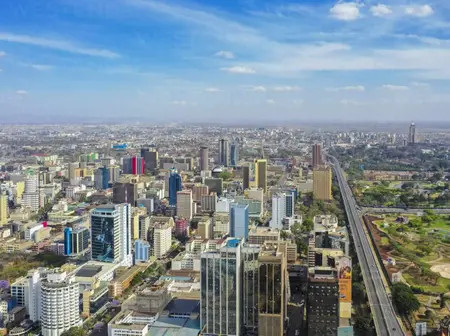Nairobi is on the verge of a major governance shift as Governor Johnson Sakaja confirmed that the county is in the final stages of appointing six borough managers to run day-to-day service delivery in the capital.
Eight names have already been shortlisted, with six set to lead Nairobi East, West, North, South, South East, and Central.
Once appointed, these managers will act as the “mini-governors” of their respective regions, tasked with fixing roads, water supply, waste collection, and other essential services—without residents being forced to battle long delays at City Hall.
“We have shortlisted borough managers; eight names have already been tabled, and from them, we shall appoint six. Each manager will be responsible for their borough, ensuring that local needs such as roads, water, and other essential services are identified and addressed without unnecessary bureaucracy,” Sakaja announced.
The Governor emphasised that the borough system is designed to decentralise power and make county leadership more inclusive, responsive, and fair. “These managers will step down to the ground, listen to what people need, and work with the executive to ensure solutions are delivered,” he explained.
Nairobi’s six boroughs will function like specialised units, each focusing on the unique priorities of its region. This means residents will no longer have to wait for approvals from central offices but will instead deal directly with local managers who understand the challenges on the ground.
By decentralising service delivery, Sakaja explained, Nairobians can expect faster fixes to problems that have long plagued neighbourhoods.
For instance, while Nairobi East may prioritise upgrading inner roads and drainage, Nairobi West may focus on public transport and markets. Nairobi North could channel more effort into water supply and housing, while Nairobi South may prioritise industrial infrastructure and waste management.
Nairobi South East may address education and community health gaps, while Nairobi Central will likely concentrate on CBD cleanliness, lighting, and urban planning.
The borough appointments are part of Sakaja’s broader urban renewal agenda, which includes street lighting upgrades, waste reforms, and housing projects. If fully rolled out, this system could mark the most significant restructuring of Nairobi’s service delivery in years, creating a city where leadership is not only visible but also directly accountable to residents.
The committee has also recommended setting up administrative headquarters in each borough. Under the plan, the Northern Borough would bring together Kasarani, Roysambu, and Ruaraka sub-counties.
The Central Borough would cover Starehe, Kamukunji, and Mathare sub-counties, while the Western Borough—comprising Westlands, Dagoretti North, and Dagoretti South—would have its main office located either in Waruku or Kawangware.
For the Southern Borough, Kibra and Lang’ata sub-counties have been grouped. The Eastern Borough is set to cover much of Eastlands, including Embakasi Central, Embakasi West, and Embakasi North. Meanwhile, the South Eastern Borough will encompass Embakasi South, Embakasi East, and Makadara sub-counties.
The proposal is anchored in the Urban Areas and Cities Act of 2011, which empowers county governments to subdivide their jurisdictions and appoint city or municipal managers to oversee service delivery in designated areas.

Leave a Reply